The Spotted-necked otter, scientifically called Hydrictis maculicollis, gets its name from the creamy white speckled spots on its neck and chest. It has a long sinuous body coated in strong, water-repellent fur that ranges in hue from reddish to chocolate brown. Its completely webbed paws feature keen, well-developed claws and are more aquatic than other African otters. Small teeth inside its short, wide nose are specialized for hunting fish rather than the crustaceans that clawless otters feed. Its long hairy tail is flattened horizontally and terminates in a tip.
The Spotted-necked otter is found in Sub-Saharan Africa, from Guinea Bissau to southwest Ethiopia and southeast South Africa. Although it is prevalent in the majority of the nations in this region, it is not found in certain huge parts of southern Africa.
Speckle-throated Otter: Species Profile
COMMON NAME: Speckle-throated Otter
SWAHILI NAME: Fisi Maji Domo-madoa
SCIENTIFIC NAME: Hydrictis maculicollis
TYPE: Mammal
FOOD: Speckle-throated Otters are carnivorous and primarily feed on a variety of aquatic prey. Their diet includes fish, crabs, frogs, turtles, and small invertebrates found in rivers, lakes, and wetlands. They are skilled hunters, using their keen eyesight and sharp teeth to catch and consume their prey.
HABITAT: Speckle-throated Otters are native to parts of sub-Saharan Africa and can be found in freshwater habitats such as rivers, streams, lakes, and marshes. They prefer areas with dense vegetation and ample food sources. These otters are well-adapted to their semi-aquatic lifestyle, spending much of their time in water.
SIZE: Speckle-throated Otters are medium-sized otters, with a body length of approximately 70 to 90 centimeters (27 to 35 inches). Their tail adds an additional length of around 40 to 55 centimeters (16 to 22 inches). Adult otters weigh between 5 to 15 kilograms (11 to 33 pounds), with males typically being larger than females.
AVERAGE LIFE SPAN IN THE NATURAL HABITAT: In the wild, Speckle-throated Otters have an average lifespan of around 10 to 12 years. However, with proper protection and minimal human disturbance, they can potentially live longer.
ACTIVE: Speckle-throated Otters are primarily diurnal, meaning they are most active during the day. They are social animals and live in small family groups consisting of a monogamous pair and their offspring. These otters have excellent swimming and diving abilities, enabling them to navigate through water swiftly and catch their prey.
GESTATION PERIOD: The gestation period for Speckle-throated Otters is approximately 60 to 63 days. Female otters give birth to a litter of one to three pups in a den located near water. The pups are born blind and rely on their mother for nourishment and protection. As they grow, they learn to swim and hunt under their mother’s guidance.
WEIGHT: Adult Speckle-throated Otters typically weigh between 5 to 15 kilograms (11 to 33 pounds). They have a slender body shape, webbed feet, and a long tail, which aids in their aquatic locomotion. Their fur is dense, providing insulation and waterproofing.
SIZE COMPARISON TO A 6-FT MAN: Speckle-throated Otters are smaller in size compared to a 6-ft man. They have a body length of approximately 70 to 90 centimeters (27 to 35 inches), excluding the tail. When fully stretched out, their total length can reach up to 1.4 meters (4.6 feet). They are known for their sleek appearance, distinctive facial markings, and playful behavior in the water.
Physical Characteristics:
The Speckle-throated Otter is a species of otter found in South and Southeast Asia. It is known for its distinctive appearance and features that set it apart from other otter species. Here are the notable characteristics of the Speckle-throated Otter’s appearance:
- Size and Body Structure: The Speckle-throated Otter is a medium-sized otter species, with males typically larger than females. Adults can measure between 85 to 110 centimeters (33 to 43 inches) in length, excluding the tail. They have a long and slender body, well-suited for their semi-aquatic lifestyle.
- Smooth Coat: As the name suggests, the Speckle-throated Otter has a smooth and velvety coat. The fur is short, dense, and shiny, providing excellent insulation and buoyancy in water. The coloration of the fur varies from dark brown to reddish-brown, often with a paler underside.
- Distinctive Facial Features: The otter’s face is characterized by several distinguishing features. It has a broad and rounded snout, small rounded ears, and prominent vibrissae, commonly known as whiskers. The vibrissae play a crucial role in sensory perception, helping the otter detect movements and vibrations in the water.
- Speckled Throat and Chest: One of the defining features of the Speckle-throated Otter is its speckled throat and chest, which gives the species its name. This area is covered with white or pale cream-colored fur, contrasting with the darker fur on the rest of its body.
- Webbed Feet: The otter has fully webbed feet, with well-developed webbing between its toes. This adaptation facilitates efficient swimming and aids in propulsion, allowing the otter to navigate through water with agility and speed. The webbing also assists in digging burrows and manipulating prey.
- Long, Tapered Tail: The Speckle-throated Otter has a long, thick tail that tapers towards the end. The tail serves multiple functions, providing balance and stability while swimming, acting as a rudder for precise maneuvering, and aiding in propulsion during swimming and diving.
- Sharp, Non-retractable Claws: Unlike some other otter species, the claws of the Speckle-throated Otter are sharp and non-retractable. These claws are well-adapted for catching and holding onto slippery prey, such as fish or crustaceans, and for climbing riverbanks or vegetation.
The unique appearance of the Speckle-throated Otter makes it an intriguing and visually distinct species among otters. Its smooth coat, speckled throat, webbed feet, and other physical characteristics contribute to its adaptability in aquatic environments.
A. Unique Coat Pattern:
The Speckle-throated Otter displays a distinctive coat pattern characterized by a dark brown or reddish-brown back, while its throat and chest feature striking speckles or spots. This visually appealing coat adds to its allure and helps distinguish it from other otter species.
B. Slender Body and Webbed Feet:
With a streamlined and elongated body, the Speckle-throated Otter is perfectly adapted for an aquatic lifestyle. Its webbed feet allow for efficient swimming and maneuvering through the water, while its long tail aids in balance and navigation.
Habitat and Distribution:
A. Riparian and Wetland Environments:
These otters prefer freshwater habitats such as rivers, streams, lakes, and marshes. They can also be found in coastal areas with mangrove forests. Their adaptable nature allows them to thrive in both natural and human-altered environments.
B. Geographic Distribution:
The Speckle-throated Otter is primarily found in Southeast Asia, including countries such as India, Bangladesh, Myanmar, Thailand, Cambodia, and Vietnam. Its distribution is influenced by the availability of suitable water bodies and prey resources.
Behavior and Social Structure:
The Speckle-throated Otter, exhibits fascinating behaviors that are shaped by its semi-aquatic lifestyle and social dynamics. Here are some notable aspects of the Speckle-throated Otter’s behavior:
- Social Nature: Speckle-throated Otters are highly social animals and typically live in groups called “holts.” These groups usually consist of an adult breeding pair and their offspring from previous years. The cooperative nature of their social structure enables them to share responsibilities such as hunting, grooming, and protecting their territory.
- Territoriality and Home Ranges: Speckle-throated Otters defend territories along water bodies, including rivers, lakes, and wetlands. They mark their territories with scent and vocalizations, deterring intruders and signaling their presence to other otters. The size of their home ranges can vary depending on resource availability and population density.
- Vocalizations: Speckle-throated Otters are known for their vocal repertoire, which includes a range of distinct calls. These vocalizations serve various purposes, such as communicating with group members, warning of potential threats, and maintaining contact during foraging or traveling. They can produce sounds like chirps, whistles, and high-pitched squeaks.
- Semi-Aquatic Lifestyle: As semi-aquatic mammals, Speckle-throated Otters are well-adapted to their aquatic habitats. They are agile swimmers, using their webbed feet and streamlined bodies to navigate through water with ease. They can hold their breath for several minutes, allowing them to dive and hunt for prey underwater.
- Hunting and Feeding: Speckle-throated Otters are opportunistic hunters, primarily feeding on fish but also consuming crustaceans, amphibians, and other small aquatic creatures. They employ various hunting techniques, including cooperative hunting, where they work together to encircle and catch fish. They may also use their sensitive vibrissae (whiskers) to detect movements and vibrations in the water, aiding in prey detection.
- Playful Behavior: Like other otter species, Speckle-throated Otters engage in playful behavior, particularly among young individuals. Play serves multiple purposes, such as strengthening social bonds, practicing hunting skills, and providing mental stimulation. Playful activities may include sliding on muddy banks, wrestling, chasing each other, and playing with objects found in their environment.
- Burrow Construction: Speckle-throated Otters are skilled burrowers and construct complex underground burrows, known as “holts,” along riverbanks or near water bodies. These burrows provide shelter, protection from predators, and a safe place for resting and rearing their young. The holts often have multiple entrances and chambers, including a nesting chamber lined with grass or leaves.
- Parental Care: Breeding pairs of Speckle-throated Otters exhibit strong parental care towards their young. Both parents are involved in nurturing and protecting the offspring, sharing responsibilities such as grooming, feeding, and teaching essential skills. Young otters learn crucial survival skills through observation and interaction with their parents and older siblings.
Understanding the behavior of Speckle-throated Otters enhances our appreciation of their social interactions, adaptability to aquatic environments, and their ecological role within freshwater ecosystems. However, it is important to observe these animals from a respectful distance and avoid causing disturbance to ensure their well-being and conservation.
A. Agile Swimmers:
The Speckle-throated Otter is an excellent swimmer, capable of diving and staying underwater for extended periods. Its webbed feet, streamlined body, and dense fur provide insulation and hydrodynamic efficiency, enabling it to navigate through water with ease.
B. Social Bonds:
These otters are known to be social animals, often forming family groups or small clans. They engage in playful activities, vocalizations, and grooming rituals that strengthen social bonds and promote cooperation within the group.
Diet and Feeding Habits:
A. Opportunistic Predators:
The Speckle-throated Otter is a skilled hunter, relying primarily on fish as its main food source. It also feeds on crustaceans, amphibians, reptiles, and occasionally small mammals or birds. Its keen eyesight and sharp teeth aid in capturing and consuming prey.
B. Foraging Techniques:
Using their dexterous paws and acute sense of touch, these otters search for prey by flipping rocks, digging in the substrate, or patting the water surface to locate hidden prey items. Their agile movements and quick reflexes make them efficient hunters.
Reproduction and Conservation:
A. Breeding Behavior:
Breeding in Speckle-throated Otters typically occurs during the dry season. After a gestation period of around two months, the female gives birth to a litter of usually two to four pups. Both parents actively participate in nurturing and protecting the young.
B. Conservation Status:
The Speckle-throated Otter is currently listed as Vulnerable on the International Union for Conservation of Nature (IUCN) Red List. Its population is threatened by habitat loss, pollution, and poaching. Conservation efforts focus on habitat preservation, pollution control, and raising awareness about the importance of otter conservation.
Hydrictis maculicollis
The Hydrictis maculicollis (Speckle-throated Otter or specked-necked otter) enchants us with its stunning appearance, aquatic prowess, and social nature. This delightful species serves as a vital indicator of the health of freshwater ecosystems and reminds us of the urgent need to protect and conserve these precious habitats. By appreciating and understanding the unique qualities of the Speckle-throated Otter, we can contribute to its conservation and ensure the survival of this magnificent creature for future generations.
Speckle-throated Otter Adaptations
The Speckle-throated Otter, possesses several remarkable adaptations that enable it to thrive in its semi-aquatic habitat. These adaptations are specialized features that enhance the otter’s survival and ability to navigate through its environment. Here are some notable adaptations of the Speckle-throated Otter:
- Streamlined Body: The Speckle-throated Otter has a sleek and streamlined body, which is well-suited for efficient swimming and diving. Its hydrodynamic shape reduces water resistance, allowing the otter to move swiftly through the water, whether it is hunting for prey or traveling between locations.
- Webbed Feet: The otter’s feet are fully webbed, with the toes connected by webbing. This adaptation facilitates excellent swimming abilities, providing propulsion and maneuverability in the water. The webbing also assists in digging burrows and enables the otter to navigate through aquatic vegetation with ease.
- Sharp Teeth: The Speckle-throated Otter possesses sharp, strong teeth that are adapted for catching and consuming its prey. It has long canine teeth, ideal for gripping and subduing fish and other aquatic animals. The teeth are well-suited for tearing apart prey and consuming their flesh.
- Sensitive Vibrissae: The otter’s vibrissae, also known as whiskers, are highly sensitive and serve as important sensory organs. Speckle-throated Otters use their vibrissae to detect movements and vibrations in the water, aiding in prey detection. They can sense the slightest disturbances, helping them locate and capture prey effectively.
- Insulating Fur: The otter’s fur is dense and waterproof, providing excellent insulation and buoyancy. It helps to maintain the otter’s body temperature in cold water and prevents the fur from becoming waterlogged. The fur also traps a layer of air close to the otter’s skin, providing additional insulation and keeping it warm.
- Nictitating Membrane: The Speckle-throated Otter has a transparent third eyelid called the nictitating membrane. This membrane can cover the otter’s eyes and protect them while swimming underwater. It acts as a shield, allowing the otter to see clearly underwater and shielding its eyes from debris and potential harm.
- Dexterity and Manual Skills: The otter’s forepaws are dexterous and well-adapted for manipulating prey items. While they lack visible claws, their paws are nimble and capable of grasping and handling fish and other aquatic creatures with precision. This adaptation enables the otter to secure and handle its prey effectively.
These adaptations of the Speckle-throated Otter exemplify its remarkable ability to thrive in aquatic environments. They enhance the otter’s swimming, hunting, and survival capabilities, allowing it to be a skilled and efficient predator in its habitat.
Where to See Speckle-throated Otters in Tanzania
Speckle-throated Otters, can be found in various regions of Tanzania, particularly in areas with suitable freshwater habitats. While they are more commonly distributed in South and Southeast Asia, they have a limited presence in Tanzania. Here are some potential locations where you might be able to see Speckle-throated Otters in Tanzania:
- Rivers and Lakes: Speckle-throated Otters prefer habitats with abundant freshwater resources, such as rivers, lakes, and wetlands. Look for them along the banks of rivers like the Rufiji River, Wami River, or Lake Tanganyika. These water bodies provide suitable environments for the otters to feed on fish and other aquatic prey.
- Selous Game Reserve: The Selous Game Reserve, located in southern Tanzania, is one of the largest protected areas in Africa and is known for its diverse wildlife. Speckle-throated Otters have been spotted in the reserve’s rivers and lakes, making it a potential site to observe these elusive creatures.
- Ruaha National Park: Situated in central Tanzania, Ruaha National Park is renowned for its diverse ecosystems and wildlife. Although primarily known for its terrestrial species, the park encompasses the Great Ruaha River, where Speckle-throated Otters may occasionally be found. Exploring the riverbanks or embarking on a river safari can increase your chances of spotting them.
- Mahale Mountains National Park: Located in western Tanzania along the shores of Lake Tanganyika, Mahale Mountains National Park is home to a variety of unique wildlife. While the park is famous for its chimpanzee population, it is worth keeping an eye out for Speckle-throated Otters near the lake’s shoreline, as they have been reported in this area.
- Udzungwa Mountains National Park: The Udzungwa Mountains National Park, situated in the Eastern Arc Mountains of Tanzania, is known for its rich biodiversity. Although the primary focus is on the park’s forest-dwelling species, Speckle-throated Otters have been sighted in some of the rivers and streams that flow through the park.
When searching for Speckle-throated Otters, it is essential to exercise patience and maintain a respectful distance to avoid disturbing their natural behavior. Remember that otters can be elusive and may not always be easily spotted. Engaging the services of experienced local guides or joining guided nature tours can increase your chances of encountering these fascinating otters in their natural habitat.
Speckle-throated Otter Safari Tips
If you’re planning a safari to observe Speckle-throated Otters (Lutra perspicillata) in their natural habitat, here are some safari tips to enhance your experience and maximize your chances of spotting these fascinating creatures:
- Research Suitable Locations: Before embarking on your safari, research the locations in Tanzania where Speckle-throated Otters have been sighted. Focus on areas with freshwater bodies such as rivers, lakes, and wetlands where otters are likely to be present. This will help you plan your itinerary accordingly.
- Engage Knowledgeable Local Guides: Hiring the services of experienced local guides who are familiar with the habitats and behaviors of Speckle-throated Otters can greatly enhance your safari. They can provide valuable insights, identify otter hotspots, and increase your chances of successful sightings.
- Choose Optimal Timing: Speckle-throated Otters are more active during certain times of the day, such as early morning or late afternoon. Plan your safari activities accordingly, as these are the periods when otters are more likely to be engaged in hunting, grooming, or playing.
- Be Patient and Observant: Observing wildlife, including otters, requires patience and keen observation skills. Spend time near water bodies, scan the banks and water surface for any signs of otter activity, such as splashes or movement. Be attentive to their distinct vocalizations, which can help guide you to their location.
- Quiet and Slow Approach: When approaching areas where otters may be present, maintain a quiet and slow approach. Sudden noises or fast movements can startle otters and cause them to retreat or become elusive. Use binoculars or a telephoto lens to observe them from a distance without disturbing their natural behavior.
- Respect Their Space: It is crucial to respect the natural behavior and space of Speckle-throated Otters. Keep a safe distance and avoid approaching too closely, as this can cause stress or disturbance to the otters. Observe them from a distance, allowing them to carry on with their activities naturally.
- Use Stealthy Observation Techniques: Otters are generally wary creatures, so it is important to adopt stealthy observation techniques. Blend into your surroundings, minimize sudden movements, and avoid making unnecessary noise. This will increase your chances of observing otters without alarming them.
- Pack Essential Safari Gear: When going on a Speckle-throated Otter safari, pack essential gear such as binoculars, a camera with a zoom lens, sunscreen, insect repellent, and appropriate clothing for the weather conditions. A field guide or reference book on otters can also be useful for identification and understanding their behavior.
Remember, wildlife encounters can be unpredictable, and there is no guarantee of seeing Speckle-throated Otters during your safari. However, by following these tips and immersing yourself in their natural habitat, you increase your chances of witnessing these remarkable otters and gaining a deeper appreciation for their behavior and ecology.
Speckle-throated Otter Frequently Asked Questions
Q: What is a Speckle-throated Otter?
A: The Speckle-throated Otter (Lutra perspicillata), also known as the Indian Smooth-coated Otter, is a species of otter native to South and Southeast Asia. It is known for its sleek coat, distinctive white throat with dark speckles, and semi-aquatic lifestyle.
Q: Where do Speckle-throated Otters live?
A: Speckle-throated Otters are primarily found in freshwater habitats, including rivers, lakes, wetlands, and mangrove swamps. While they are more commonly distributed in South and Southeast Asia, they also have a limited presence in parts of Tanzania.
Q: What do Speckle-throated Otters eat?
A: Speckle-throated Otters primarily feed on fish, which make up the majority of their diet. They are skilled hunters and use their agility and sharp teeth to catch fish underwater. They may also consume crustaceans, amphibians, reptiles, and occasionally small mammals.
Q: How do Speckle-throated Otters communicate?
A: Speckle-throated Otters use a variety of vocalizations and body postures to communicate with each other. They produce chirping sounds, whistles, and growls, especially during social interactions or to alert others of potential danger. They also use scent marking to communicate their presence.
Q: Are Speckle-throated Otters endangered?
A: Yes, Speckle-throated Otters are listed as a vulnerable species by the International Union for Conservation of Nature (IUCN). They face various threats, including habitat loss, pollution, hunting, and trapping. Conservation efforts are underway to protect their habitats and ensure their long-term survival.
Q: Do Speckle-throated Otters live in groups?
A: Speckle-throated Otters are social animals and are usually found in family groups or small clans. A typical group consists of an adult breeding pair and their offspring. They engage in cooperative behaviors such as hunting, grooming, and defending their territory together.
Q: How long do Speckle-throated Otters live?
A: The average lifespan of Speckle-throated Otters in the wild is estimated to be around 10 to 12 years. However, with proper protection and reduced threats, they can potentially live longer.
Q: Can Speckle-throated Otters swim underwater?
A: Yes, Speckle-throated Otters are highly adapted for swimming and can spend a significant amount of time underwater. They have a streamlined body, webbed feet, and a strong tail that assist in efficient swimming and diving.
Q: Do Speckle-throated Otters build dens?
A: Yes, Speckle-throated Otters construct dens in riverbanks, under tree roots, or in dense vegetation near water bodies. These dens provide shelter, protection, and a safe place for raising their young.
Q: Can Speckle-throated Otters be kept as pets?
A: Keeping Speckle-throated Otters as pets is not recommended or legal in most countries. They are wild animals with specialized needs and require specific habitats to thrive. It is important to respect their natural behavior and contribute to their conservation in the wild.
These frequently asked questions provide insights into the fascinating world of Speckle-throated Otters, their habitat, behavior, and conservation status. Remember to appreciate these remarkable creatures from a distance and support efforts aimed at protecting their populations and habitats.


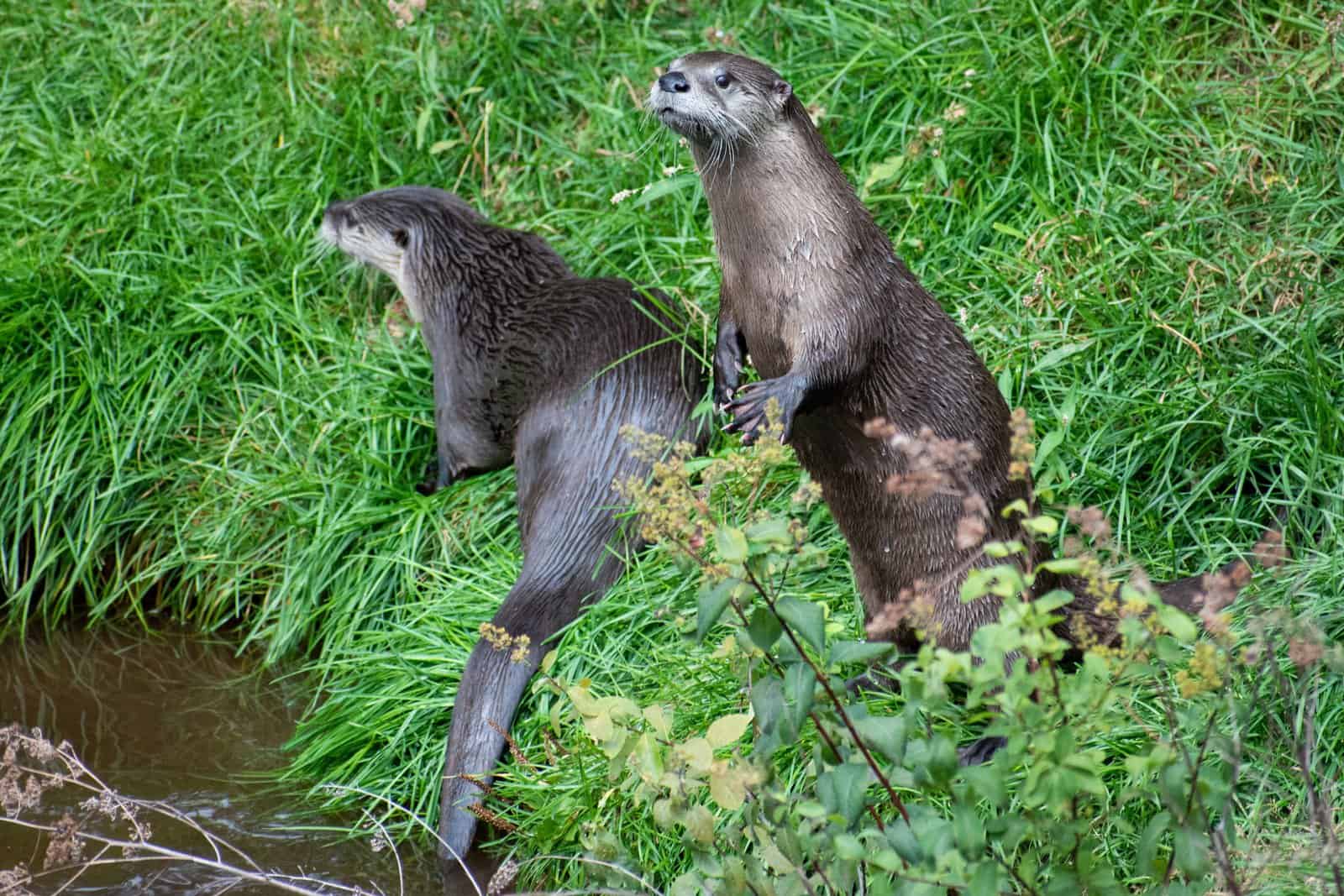
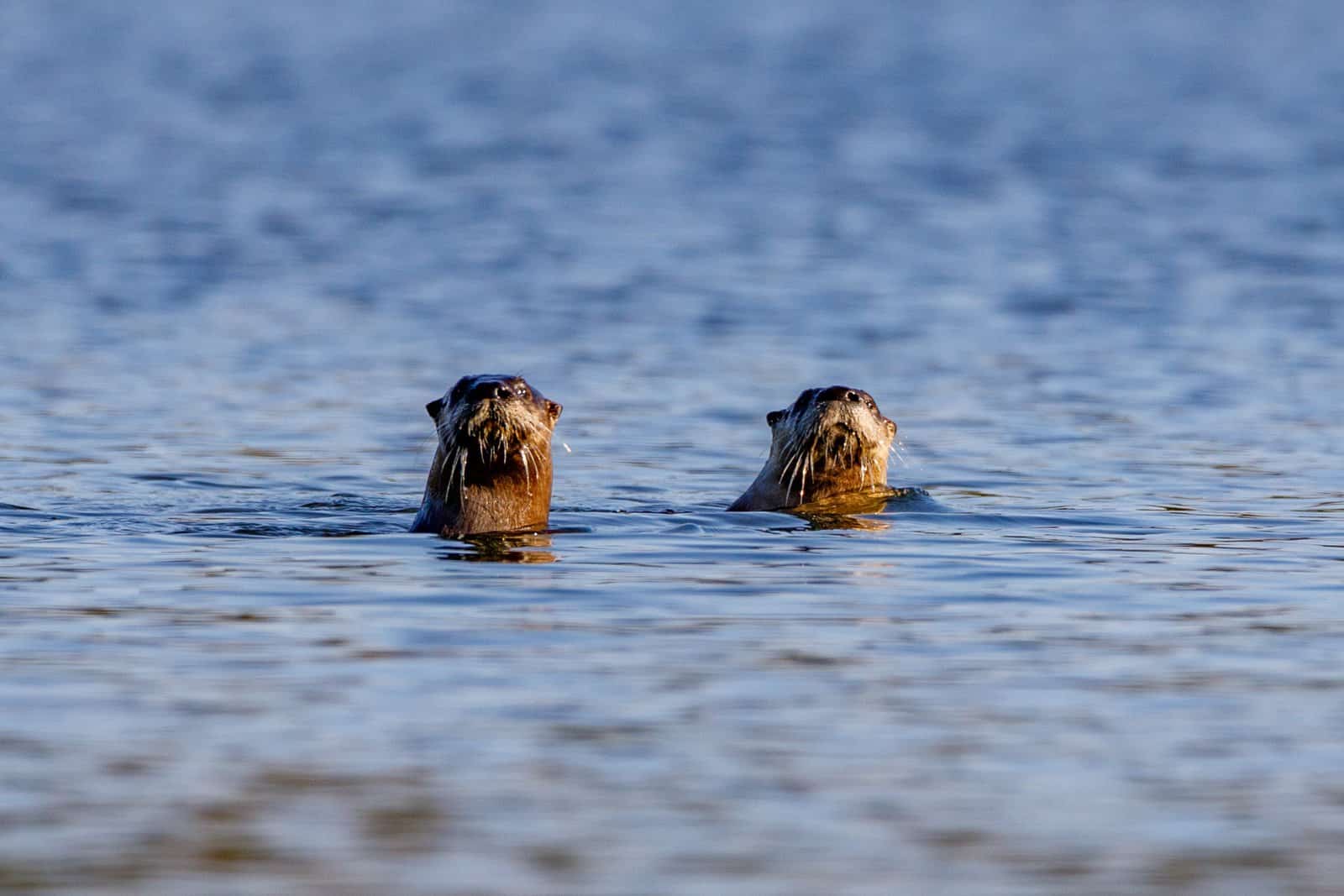
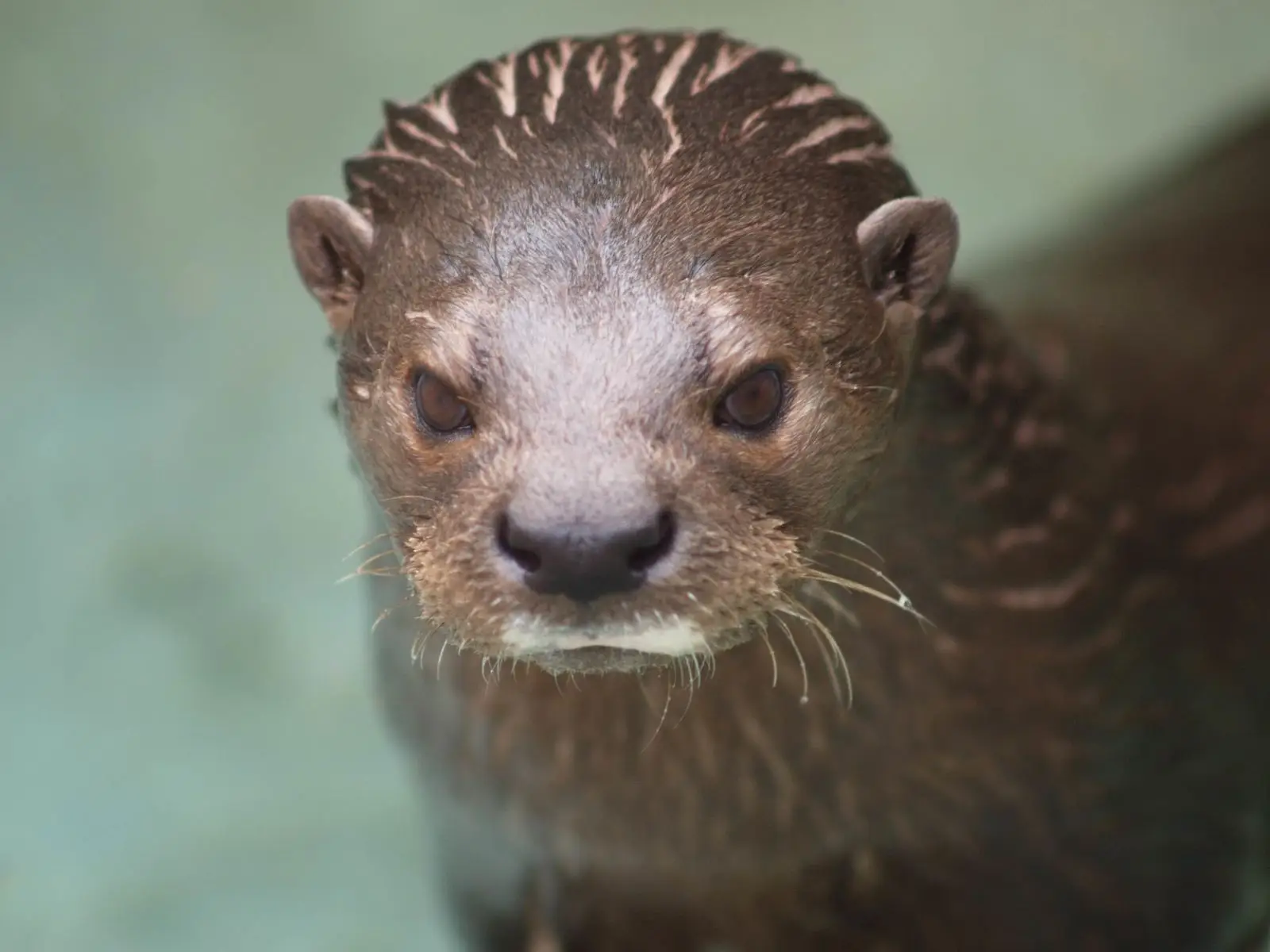
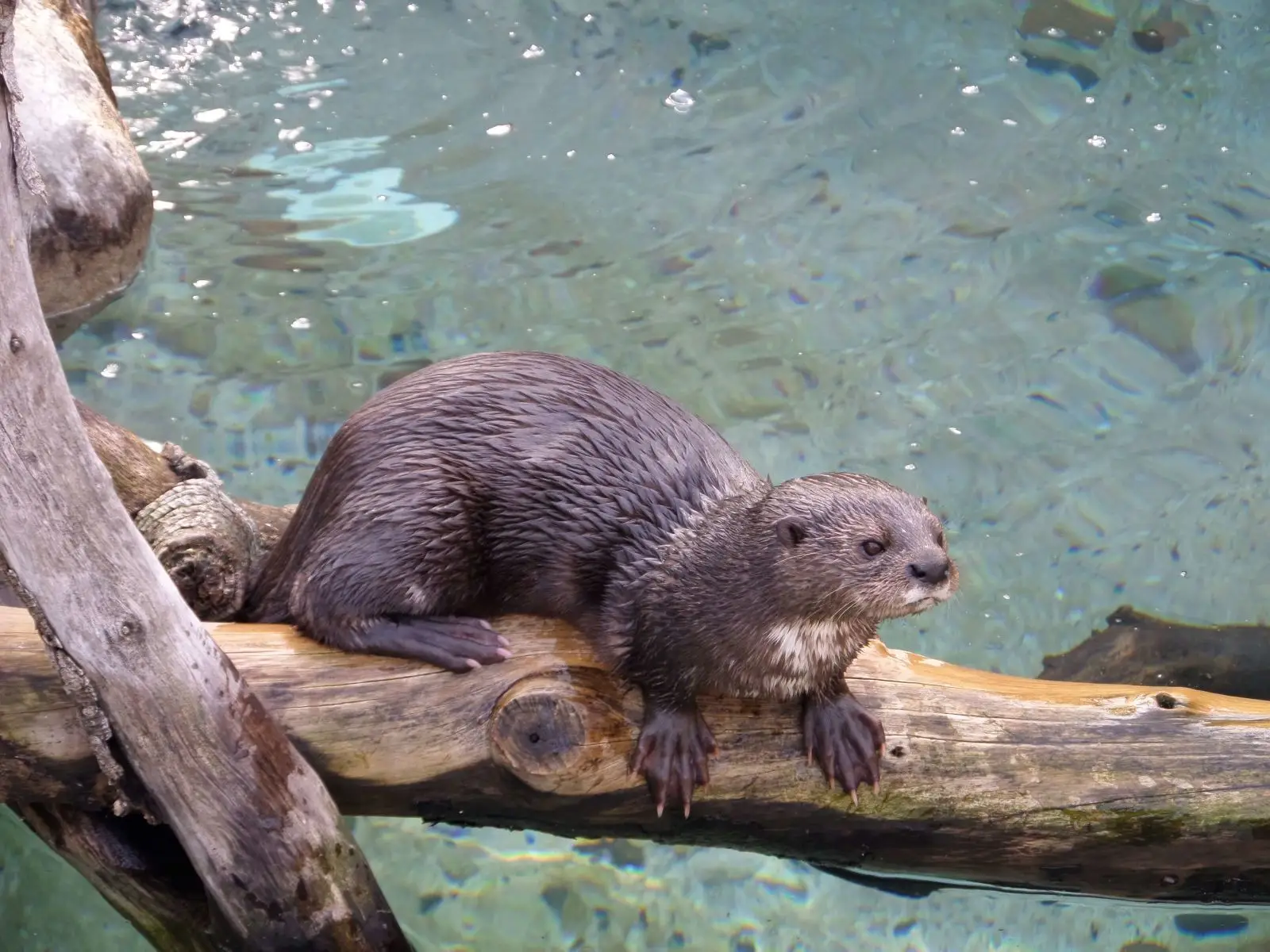
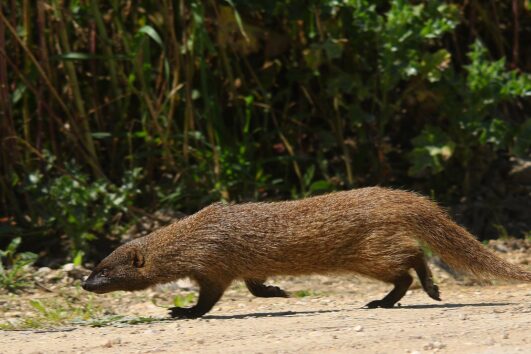
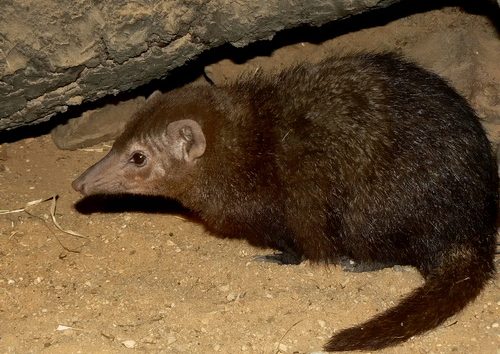

Tour Reviews
There are no reviews yet.
Leave a Review